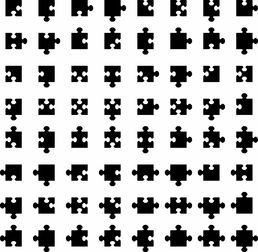Content:
HTML, short for HyperText Markup Language, is the very essence of the digital world we inhabit. It's like the alphabet for the internet, allowing us to structure and present content on websites in a way that browsers can understand and render beautifully. As a self-proclaimed knowledge blogger in the realm of web development, let's embark on an exciting journey to demystify HTML and equip you with the fundamentals needed to create your own online presence.
First things first, HTML stands for 'HyperText Markup'. This markup language uses tags to tell a browser how to interpret and display text, images, and other elements on a webpage. Think of it as adding context and meaning to raw text, making it interactive and visually appealing. Each tag has an opening and closing pair, with the content you want to format sandwiched between them.
Let's dive into some key HTML tags:
1、<html>: This is the root element of your webpage, encompassing all other elements. Everything within this tag is considered part of the document.

2、<head>: This is where you store meta information about your page, such as the title (displayed in the browser tab), description, and links to external stylesheets and scripts.
3、<title>: This is crucial; it's what users see when they bookmark or share your page. Make it catchy and informative!
4、<body>: This contains the visible content of your page – text, images, headings, paragraphs, and more.
5、<h1> - <h6>: These are heading tags, used for structuring content from largest to smallest. Search engines love well-structured content.
6、<p>: Paragraphs are denoted with this tag, helping readability and SEO.
7、<img>: Use this to embed images, providingsrc (source) andalt (alternative text) attributes for accessibility and search indexing.
8、<a>: Anchor tag creates links, allowing users to navigate to other pages or sections within your site.
Now that you have a basic understanding of these tags, let's talk about how to write and structure your HTML code. It's important to maintain proper indentation and keep your code clean and organized. Here's a simple example of a basic webpage:
<!DOCTYPE html>
<html lang="en">
<head>
<meta charset="UTF-8">
<meta name="viewport" content="width=device-width, initial-scale=1.0">
<title>Welcome to My Website</title>
<style>
/* Add your CSS here */
</style>
</head>
<body>
<header>
<h1>About Us</h1>
<nav>
<a href="#home">Home</a>
<a href="#services">Services</a>
<a href="#contact">Contact</a>
</nav>
</header>
<main>
<section id="home">
<h2>Welcome to our website!</h2>
<p>This is an example of a simple HTML page.</p>
</section>
<!-- Add more sections here -->
</main>
<footer>
<p>© 2023 My Website. All rights reserved.</p>
</footer>
</body>
</html>To test your HTML, you can either use a text editor and open the file in a browser or use a live code editor like CodePen or Glitch. Remember, learning HTML is just the beginning; CSS (Cascading Style Sheets) and JavaScript will enhance your webpage's design and interactivity.
In conclusion, mastering HTML is like building the foundation for any web project. By understanding its core concepts and tags, you'll be able to create informative, user-friendly, and visually appealing websites. Happy coding, and don't forget to explore the countless resources available online for further learning and practice!
版权声明
本文仅代表作者观点,不代表百度立场。
本文系作者授权百度百家发表,未经许可,不得转载。








